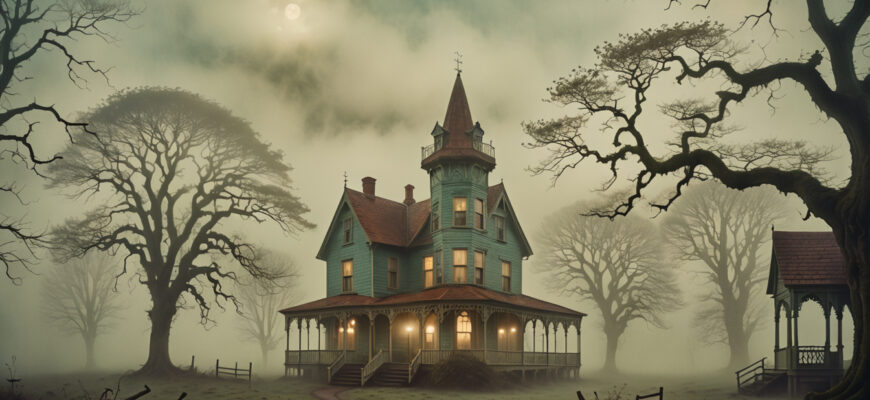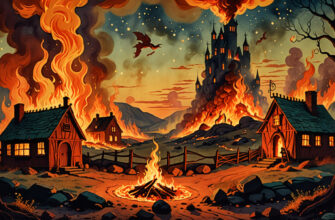When fog drifts into dreams, it often carries the weight of not knowing—an emotional and visual haze that both clouds the way forward and invites a deeper look inward. Imagine that thick mist resting just beyond your reach, softening shapes and swallowing familiar landmarks. It’s neither bright nor fully dark but lingers in a suspended state between clarity and mystery. That in-between space can hold many tensions: anxiety mixed with calm, disorientation alongside cautious curiosity. The visual blurriness of fog in dreams mirrors moments in life when emotions feel tangled and decisions become unclear. It’s a symbol that captures the essence of uncertainty, wrapping the inner world in gentle obscurity and asking for patience with not-knowing.
Understanding Fog In Dreams: What Does It Mean?
At its core, fog in dream imagery represents a thick veil over perception. Visually, it blurs outlines and dissolves distance, while emotionally, it can usher in feelings of uncertainty and hesitation. This dream symbol nudges the dreamer to notice where clarity is suspended—where the usual paths and certainties seem hidden or just out of focus.
People often wake from fog dreams feeling unsettled or mystified, caught between wanting insight and confronting the unknown. The fog evokes a kind of quiet mystery, a sense that something is present yet concealed. It can inspire feelings ranging from mild confusion to deep inner questioning.
This symbolism is particularly potent because fog isn’t merely about external weather—it’s a mirror for inner emotional and psychic states. It spotlights times of suspended clarity, where emotions swirl like mist and the mind flirts with not-knowing. This makes fog a powerful emblem of inner confusion and emotional haziness, reminding us that sometimes growth happens in the gray, not only in the light.
Psychological Perspectives On Fog In Dreams
The dream landscape of fog has been a rich source for psychological interpretation, touching on how the unconscious mind shapes our experience of uncertainty and mystery.
Jungian analysis sees fog as standing right on the psychic threshold—the edge between the known, everyday world and the deeper, unconscious layers of the psyche. Fog becomes a symbol for the unconscious itself, swirling with repressed feelings, memories, and potentials that haven’t yet come into clear view. It asks the dreamer to approach the unseen parts of themselves with openness, recognizing that transformation often starts in this dim, liminal space.
James Hillman’s archetypal psychology adds another layer by framing fog as a room where the soul’s imagination is free to roam. Rather than rushing to solve or clear the mystery, Hillman encourages embracing fog as poetic vision in motion—a sacred space for disorientation and soul work. Here, fog is not just confusion but an invitation to descend into deeper feeling and creative possibility. It holds the soul’s poetic and mythic potential, masking what’s ready to be reclaimed or reimagined.
Fog’s presence in a dream often reflects emotional complexity—anxiety, ambivalence, or hovering on the edge of clarity. It mimics times when the mind and heart can’t fully settle, when feelings resist easy labeling. This emotional fog can feel like a pause—slow, uncertain, sometimes unsettling—but it also grants the gift of slowing down, of resisting the pull toward rushed interpretation or forcing premature answers.
In this way, fog in dreams extends an invitation: Sit with the confusion. Let the mist linger instead of demanding clarity. This approach respects the natural unfolding of insight and honors the patience needed in moments of inner haziness. Dreaming of fog suggests a psychic pause, a waiting room where clarity builds gradually rather than instantaneously.
Fog In Mythology And Cultural Storytelling
Across ancient myths and folklore, fog often marks the boundary where transformation begins, defining spaces where the ordinary blurs into the extraordinary.
Many myths use fog imagery to symbolize gateways or liminal spaces—thresholds between worlds, states of being, or phases of life. These spaces hold potential for profound change, where the self can dissolve and emerge anew. In such stories, fog masks the transition, wrapping those who pass through in mystery and uncertainty, indicating that the journey ahead is not yet clear.
Folklore from various cultures often associates fog and mist with encounters with liminal beings, spirits, or otherworldly presences. This atmospheric veil offers both protection and concealment, blurring the lines between reality and the unseen. It’s a space where the familiar might meet the uncanny, where secrets wait just out of sight.
Gypsy folklore offers a unique nod to fog dreams, seeing them as spaces of protection and veiling—a temporary pause that conceals hidden wisdom. Here, fog is not just obscurity but a shield, signaling that some truths or changes are not yet ready for daylight.
These meanings can also take on gendered dimensions in different cultures. Women may experience fog as a symbol of fluidity, emotional ambiguity, or difficulty finding direction, while for men, fog might be linked to transformation and phases of onset in life’s journey. Across these diverse narratives, fog remains a powerful image of thresholds and uncertainty, holding fluidity and ambiguity at its core.
| Fog Dream Element | Symbolic Meaning | Emotional Tone |
|---|---|---|
| Wading Through Fog | Disorientation, facing secrets, cautious navigation | Uncertainty, vigilance, hesitation |
| Figures in Fog | Unclear relationships, social ambiguity | Confusion, curiosity, wariness |
| Lost in Fog | Feeling stuck, fear of unknown, blocked clarity | Anxiety, frustration, pause |
| Fog Clearing | Emerging insight, lifting confusion | Hope, relief, awakening |
| Fog Over Mountains | Challenges, grief, transition | Somberness, endurance |
- Key takeaway: Fog in dreams invites slowing down, holding space for uncertainty, and resisting the urge to force quick clarity.
The Emotional and Spiritual Dimensions of Fog Dreams
Ever found yourself waking from a dream blanketed in fog, feeling like you’re trapped between feelings you can’t quite name? That haze in dreams often mirrors those fuzzy emotional thresholds we cross in life—grief that hasn’t settled, uncertainty that clings like morning mist, or moments where healing demands a pause. It’s not just about confusion; it’s about what surfaces when the clear picture disappears.
Seen through a queer and feminist lens, fog pushes against the idea that emotions or stories unfold in neat, binary ways. Instead of a straight path from point A to B, these dreams invite us to honor twists, loops, and tangled edges. The mist challenges the “either/or” thinking — it shows how identities, feelings, and experiences can be fluid, nonlinear, and beautifully ambiguous. This challenges the dominant narratives that demand quick clarity and neat resolutions, both in dreaming and in waking life.
From a trauma-informed perspective, fog in dreams often acts like psychic armor. When emotions feel too raw or overwhelming, the fog provides a protective veil, slowing things down and creating a quiet space to recover. It holds the part of the self that’s fragile, inviting gentle curiosity rather than forced confrontation. One person shared how recurring fog dreams became a safe container during recovery from emotional wounds—a psychic breathing room where the mind could rest before stepping back into the light.
Approaching these unclear emotional phases through intuitive listening encourages patience. The fog marks liminality—not a place to rush past, but a threshold to honor. In these moments, rushing for answers can feel like blind steps. Instead, acknowledging the fog’s presence asks for a different kind of awareness: deep, centered, and unhurried. This openness can bring insights slowly, like dawn breaking over hills still wrapped in mist, promising clarity but only in its own time.
Connecting Fog Dreams to Real-Life Transformation and Growth
Fog dreams often show up as cosmic weather reports signaling when deep inner work is unfolding beneath the surface. This kind of psychic fog reflects times where the unconscious mind is busy turning over old patterns, questioning foundations, and preparing the ground for new growth. It’s a quiet but intense temperature check for the soul’s evolution.
Confusion here is not the enemy. It’s a part of the slow and winding path toward self-knowledge and liberation. When the way feels unclear, it might mean the self is shedding old layers or unlearning rigid structures. For queer and feminist folks, stories emerge of fog dreams sparking new understandings: one person shared how repeated fog imagery in their dreams connected with a major identity shift, reshaping how they saw their place in the world. Another recalled a fog dream during a healing circle that felt like a reminder—embracing uncertainty was an act of courage and self-love.
These transformations often arrive without fanfare, moving quietly beneath the surface until a shift appears—a clearer sense of self, a different way of relating to pain or joy. The fog doesn’t just obscure; it invites stepping into the process with trust. You were born for this—this embrace of liminal states, this navigation of shadows as an essential part of awakening. The work fog dreams invite is about calling in patience and honoring the rhythms of growth as much as the breakthroughs.
Practical Guidance: How to Work With Fog Dreams
When fog clouds the dreamscape, jumping straight to conclusions can feel tempting but often leads to more confusion. Setting intentions focused on gentle reflection rather than forcing quick answers helps open a space for insight to emerge naturally.
To honor what fog dreams might be trying to communicate:
- Journal soon after waking to capture feelings and images before they fade.
- Meditate on emotions or sensations the dream evokes without pushing them away.
- Create—whether through drawing, poetry, or movement—to translate undefined feelings into tangible forms.
Patience is key. Recognize that mental fog offers psychic protection and a needed break from overwhelm. Trusting this process means resisting the urge to force clarity or solutions when the mind isn’t ready.
That said, if the fog breeds persistent anxiety, disorientation, or interferes with daily life, seeking grounding support from trusted friends, therapists, or spiritual guides can provide a steady anchor while leaning into the mystery.








